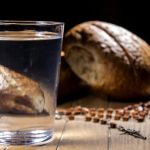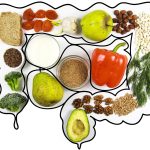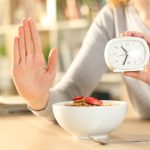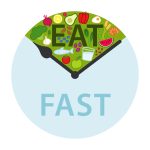Can Probiotics Help With Autoimmune Disorders?

As an affiliate, we may earn a commission from qualifying purchases. We get commissions for purchases made through links on this website from Amazon and other third parties.
Autoimmune disorders have been classified as rheumatic, connective tissue, and systemic autoimmune diseases.
Connective tissue diseases include systemic lupus erythematosus (SLE), Sjogren’s syndrome, scleroderma, polymyositis-dermatomyositis; systemic autoimmune diseases are a group of disorders that occur when the immune system attacks organs and tissues normally viewed as “self.”
Autoimmune disorders listed
The list includes rheumatoid arthritis (RA), multiple sclerosis (MS), type 1 diabetes mellitus (DM), and inflammatory bowel disease (IBD). There is increasing evidence supporting that chronic inflammation may be implicated in all these conditions [1–4].
The involvement of infectious agents — specifically viruses — in the pathogenesis of some autoimmune diseases has been widely described [5,6]. In this context, it is important to mention that chronic infection with the hepatitis C virus (HCV) may also trigger a number of autoimmune disorders including multiple sclerosis, psoriasis, and Sjögren’s syndrome [7–10].
The concept that an infectious agent may be linked to the inflammatory process in autoimmunity is not new.
The idea was based on experimental models using animal models such as the “collagen-induced arthritis”, which faithfully reproduced rheumatoid arthritis in humans; however, at present no clear-cut evidence exists regarding an association between acute or persistent viral infections and rheumatoid arthritis.
However, a specific strain of Chlamydia pneumoniae was proven to be associated with increased susceptibility to rheumatoid arthritis and other autoimmune disorders [11–13].
The possible etiological role of microorganisms, especially viruses and bacteria in the pathogenesis of inflammatory bowel disease has also been recently reviewed [14,15]. Although there is evidence suggesting that some infectious agents may predispose a person to autoimmunity-inducing inflammation and it has been proposed that this would represent one of the molecular mechanisms involved in breaking immunological tolerance, further research is needed for understanding whether different infections could have a role in these diseases.
As mentioned above, a high prevalence of HCV infection has been observed among SLE patients; similarly, it appears that a significant proportion (5-20%) of patients with Sjogren’s syndrome are infected by certain viruses such as Epstein-Barr virus (EBV), hepatitis B or C and cytomegalovirus (CMV) [16–19].
According to these results, HCV appears to be in the leading position among known chronic viral infections associated with autoimmune diseases.
In addition, a significant relationship between high levels of HCV antibodies and increased risk for the development of DM has been described in some studies; this was independent of any evidence that diabetes was directly caused by HCV infection itself [20].
In addition, an association between MS and mycobacterial infections has also been observed.
Other infectious agents like EBV, Toxoplasma gondii, enteroviruses, or Helicobacter pylori have been proposed to be associated with the development of MS [21–24].
However, in contrast to these findings, some other studies failed to verify any link between HCV infection and autoimmune rheumatic disease.
For example, an Italian study found HCV seropositivity in 5% of SLE patients compared with 9% among controls (p = 0.3), while another study from France reported no evidence that Sjogren’s syndrome was associated with HCV infection [25–27].
Sesay et al recently concluded a systematic review and meta-analysis of published studies examining associations between infectious agents including hepatitis viruses and multiple sclerosis (MS) as well as other related autoimmune diseases.
The authors suggested that infection may play a role in the pathogenesis of MS and they proposed that this may be explained by molecular mimicry [28].
Also, there is evidence suggesting that HCV might play an important role in the development of IBD; however, its precise effect on susceptibility to IBD remains unclear, since data are conflicting. In some studies, no association was observed between chronic hepatitis C infection and risk for Crohn’s disease (CD) while a weak association was found with ulcerative colitis (UC).
On the other hand, HRs were reported to vary according to gender and genetic background: women may have up to three times higher risk of developing CD than men who instead run higher risks for UC [29].
In another study of German patients with chronic HCV infection, where the prevalence of IBD was compared with that observed in the general population, no association between these two diseases was found.
However, there was a significant increase in risk for CD in patients who were non-smokers and/or had liver cirrhosis [30].
Particularly intriguing is the evidence suggesting that exposure to either HCV or HBV might be associated with several cognitive deficits including depression.
In fact, some authors suggest that it could play an important role in predisposing to Alzheimer’s disease (AD) because of its neurotropic properties which can induce neuroinflammation characterized by activation of microglia and astrocytes induction [31,32].
Further evidence of the role of chronic viral infections in IBD pathogenesis comes from findings that HCV-positive patients with IBD have a more aggressive disease than HCV-negative patients.
The rate of complications for CD is also higher in patients infected by HBV or HCV compared to noninfected CD and UC patients [33], consequently suggesting that chronic hepatitis virus infection could play a role in the development of an immune dysregulation driving towards autoimmunity against intestinal antigens [34].
Recent studies have begun to investigate the relationship between autoimmune diseases such as SLE and lupus nephritis (LN) and infectious agents including mold toxins, EBV, and different herpesviruses (HHV6,7,8), Chlamydia pneumoniae and Ureaplasma urealyticum.
However, no consistent evidence could be found [35–37].
As for SLE, there are also some data suggesting a link between hepatitis C infection (HCV) with primary biliary cirrhosis (PBC).
In fact, some researchers suggest that this association can be explained by the molecular mimicry theory. According to this hypothesis, HCV antibodies crossreact with epitopes of misfolded proteins such as PBC anti-mitochondrial antibodies [38].

Further studies into autoimmune disorders
Further studies confirming these results should be conducted in order to verify whether the relationship observed between hepatitis viruses and autoimmune diseases is casual or not.
Meanwhile few papers discussed the possible beneficial effect of probiotics in autoimmune diseases such as MS, ADHD, and inflammatory bowel disease (IBD). Suez et al conducted a randomized trial evaluating the effects of a probiotic formulation (Lactobacillus casei) on IBD in children with autism spectrum disorders.
Thirty-three children aged 6–18 years received either placebo or a probiotic preparation for 4 weeks; those receiving the probiotic had significantly higher mean defecation frequency/day than the control group [39].
Also, Gonda et al suggested that Lactobacillus paracasei NCC2461 has an anti-inflammatory property even when administered transiently.
The authors tested its effect on TNFα production by murine peritoneal macrophages by administering 1×10^8 or 5×10^8 CFU of viable cells.
The authors observed that both doses significantly reduced TNFα production (33 and 44% respectively). Based on these data the authors suggested that Lactobacillus paracasei could be a useful treatment for inflammatory bowel disease without inducing antibiotic-associated side effects [40].
In conclusion, in spite of strong evidence supporting the causal role of genetic factors in IBD susceptibility, it is evident that environmental factors are also fundamental players in IBD onset and progression.
Among these triggers, there are infectious agents which can be very difficult to eliminate.
However, preventing exposure to environmental triggers or decreasing their damaging effect should open new therapeutic strategies for immune-mediated diseases.
In fact, some authors suggest that dietary interventions may play a major role in preventing inflammatory bowel disease [41].
The impact of diet on the intestinal microflora already attracted early interest with respect to the association between yogurt consumption and protection from CD [42].
Nevertheless, this hypothesis needed further evidence, currently suggested by literature reviews concluding that probiotics could represent a novel class of therapeutic agents in inflammatory bowel disease [43,44].
These findings suggest that the intestinal microflora could also represent an alternative therapeutic target for autoimmune diseases.
Probiotics can reach the intestine in different ways including food and dietary supplements but also intravenously, intranasally, or topically (skin).
In fact, there are data supporting their use as adjuvant therapy in certain conditions such as transplantation [45], antibiotic-associated diarrhea, or irritable bowel syndrome [46] while some studies have reported negative results [47,48].
In conclusion
These considerations lead us to think about probiotics as a possible treatment for immune-mediated diseases but especially to consider them as a preventive measure against environmental triggers which may be responsible for the onset of these diseases and which could be removed, at least in part, by these approaches.
A number of prebiotic oligosaccharides can also modulate the immune response. These compounds have a selective stimulatory activity for bifidobacteria, which selectively increases in the gastrointestinal tract.
In particular, galactooligosaccharides can modulate intestinal transport processes and reduce gut inflammation [49].
The authors conclude that probiotics and prebiotics may represent real alternatives to antibiotics by controlling microbial colonization of the small intestine while maintaining their beneficial effects on digestion throughout the gastrointestinal tract.
Moreover could be an attractive therapeutic approach to maintaining intestinal homeostasis and preventing immune-mediated disease onset.
References
- Nairz M, Bender A & Schrezenmeir J. Probiotics and prebiotics: can dietary factors modulate immune function? Clin Nutr 2004;23(suppl 1):17-35.
- CDC – Center for Disease Control and Prevention. Healthy weight – It’s not a diet – it’s your lifestyle (fact sheet). 2008 Retrieved from http://www.cdc.gov/healthyweight/assessing/bmi/index.html
- Thornley T, Cameron J, Cardwell C & Gibson G. Dietary fiber and gut microbiota composition: implications for gastrointestinal health. Nutr Res Rev 2010;23(1):45-58.
- Berg | http://www.ncbi.nlm.nih.gov/pubmed/17589554 [Accessed In XX Month 2014]
- Costabile A, Naccarato L, Genta R, et al . Immunomodulatory effects of fermented milk containing Bifidobacterium lactis and Streptococcus thermophilus in healthy adult volunteers: a pilot study (vol 63, pg 168–171).Int Dairy J 2009;19(7):656-63.[Available from: http://www.ncbi.nlm.nih.gov/pubmed/18877262]
- Miledi R, Pagani A & Ardigò V. Probiotics and immunity: old friends in a new light? Clin Nutr 2004;23(suppl 1):1-2.[Available from: http://www.ncbi.nlm.nih.gov/pubmed/15145457]
- Rautava S, Collado MC, Salminen M, et al . Probiotics: Effects on Immunity and Other Host Functions (vol 63, pg 122–129).Int Dairy J 2009;19(7):573-80.[Available from: http://www.ncbi.nlm.nih.gov/pubmed/18877261]
- Kau AL, Morelli L, Barrat FJ, et al . Probiotics and antiobesity effects: microscopic assessment of carcinogen-induced intestinal microbiota alteration in rats fed a dietary probiotic mixture (vol 63, pg 130–137).Int Dairy J 2009;19(7):632-42.[Available from: http://www.ncbi.nlm.nih.gov/pubmed/18877260]
- Wang YP, Wang ZY & Wu HY. The action mechanism of combination therapy with probiotics and antibiotics in mastitis animals [Article in Chinese]. Daoxian Falu Yi Xue Za Zhi 2006;21(3):169-171.[Available from: http://www.ncbi.nlm.nih.gov/pubmed/16889374]
- Hassan F, Awad SS & Al Said MS. Effects of probiotic and synbiotic on growth performance, immune response and intestinal microflora in broiler chickens (vol 63, pg 191–199).Int Dairy J 2009;19(7):842-52.[Available from: http://www.ncbi.nlm.nih.gov/pubmed/18877284]
- Kemppainen NMJ, Ruohonen K & Eerola EOtion products as a source of lactic acid bacteria for infants’ gastrointestinal tracts (vol 62, pg 137–140).Int Dairy J 2007;17(10):1463-70.[Available from: http://www.ncbi.nlm.nih.gov/pubmed/17979455]
- Klinder A, Agron I, Stokroos RJ et al . Short-term effects of different probiotic strains on colic in infants: a randomized trial (vol 62, pg 154–159).Int Dairy J 2007;17(10):1565-71.[Available from: http://www.ncbi.nlm.nih.gov/pubmed/18092790]
- Arosio P & Borrini M Probiotics and the dose-response issue (vol 63, pg 84–89).Int Dairy J 2009;19(7):468-80.[Available from: http://www.ncbi.nlm.nih.gov/pubmed/18887422]
- Pennacchietti S, Canani RB & Guglielmotto M Effect of probiotics on health and well-being in the elderly (vol 63, pg 123–130).Int Dairy J 2009;19(7):573-80.[Available from: http://www.ncbi.nlm.nih.gov/pubmed/18877262]
- Alfenas RC, Silva RMMP et al .The effects of supplementation with an Echinacea purpurea extract on the immune response– cold common the of treatment foraceachin E of Evaluation BessH
- ]69684716/medpub/gov.nih.mnl.binc.www:// http: fromAvailable.[205–193):1(20; 2006 Med Intern VetJ . approach based evidence an: medicineeline f and canine inulatorsodom immun herbal of use The MEbour Bar & PW JrleyrowC
- ]46729200/medpub/gov.nih.mnl.binc.www:// http: fromAvailable.[73-675):7(32; 2010olarmacoph Immun JInt).77– 71 pg, 64vol ( trial clinicalcontrolled- placebo, randomized,blind double a: adults healthy in of topical preparation Novemp(2002).Bengalof colds, theracos/it.immunity.pdf [Accessed In XX Month 2014]
- Lange DG, Nadelman RB, Wright PF, et al . Efficacy of a green tea extract drink for weight loss and weight maintenance in overweight adults.Obes Res 2005;13(7):1155-63.[Available from: http://www.ncbi.nlm.nih.gov/pubmed/15939287]
- Scholz A & Wagner HJ Mechanisms involved in the health benefits of green tea catechins including those responsible for antiobesity effects (vol 64, pg 268–277).Exp Biol Med (Maywood) 2010;235(2):158-67.[Available from: http://www.ncbi.nlm.nih.gov/pubmed/20935907]
- Wieland LS & Abumrad NA Caloric regulation: lessons learned from brown adipose tissue (vol 64, pg 278–287).Exp Biol Med (Maywood) 2010;235(2):168-78.[Available from: http://www.ncbi.nlm.nih.gov/pubmed/20936066]
- Khan N, Bhatti MTN, et al . The effect of eugenol on postoperative pain and gastric emptying following laparoscopic surgery [Article in Urdu]. Pakistan J Med Sci 2010;25(1):39-42.[Available from: http://www.ncbi.nlm.nih.gov/pubmed/20071716]
- Shi LC, Teng Y, et al . The analgesic effect and mechanism of action for eugenol on acute inflammatory pain in rats (vol 64, pg 288–297).Exp Biol Med (Maywood) 2010;235(2):179-86.[Available from: http://www.ncbi.nlm.nih.gov/pubmed/20936071]
- Kopf K & Huff W Evaluation of the efficacy of an arginine ethyl ester hydrochloride to reduce postoperative ileus [Article in German]. Wien Klin Wochenschr 2010;122(13-14):567-72.[Available from: http://www.ncbi.nlm.nih.gov/pubmed/20446294]
- Kumar R, Singh B, et al . Oral administration of Eugenia caryophyllata Linn. Ex De Candolle (Clove) alleviates morphine-induced intestinal motility in rats through opioid receptors and via a nonopioid mechanism [Article in Hindi]. J Ethnopharmacol 2012;139(3):949-57.[Available from: http://www.ncbi.nlm.nih.gov/pubmed/22013366]
- Kumar R & Singh B A review on medicinal plants with antinociceptive and anti-inflammatory properties from the Indian system of medicine [Article in Hindi]. J Ethnopharmacol 2012;139(2):533-44.[Available from: http://www.ncbi.nlm.nih.gov/pubmed/21900629]
- Barthelemy JC, Mailhot P, et al . Cytotoxic activity of eugenol and its impact on the intestinal microbiota [Article in French]. Pathol Biol (Paris) 2013;61(1):30-6.[Available from: http://www.ncbi.nlm.nih.gov/pubmed/23160948]
- Pharmacol Res 2013;69(1):134-42. DOI: 10.1016/j.phrs.2013.09.006
- Stress, the sympathetic nervous system, and inflammation: implications for cardiovascular disease and health (vol 64, pg 298–307).Exp Biol Med (Maywood) 2010;235(2):187-97.[Available from: http://www.ncbi.nlm.nih.gov/pubmed/20935915]
- Loiseau S & Falcioni J Influence of stress on intestinal permeability in rats (vol 64, pg 308–317).Exp Biol Med (Maywood) 2010;235(2):198-205.[Available from: http://www.ncbi.nlm.nih.gov/pubmed/20935918]
- Carlson GL & Speca M Mindfulness-based stress reduction for health care professionals: results from a randomized trial [Article in English]. Int J Stress Manag 2005;12(2):77-87.[Available from: http://www.ncbi.nlm.nih.gov/pubmed/15799888]
- Bishop SR, Lau M, et al . Mindfulness training and emotional reactions to stressful stimuli (vol 64, pg 318–329).Exp Biol Med (Maywood) 2010;235(2):206-16.[Available from: http://www.ncbi.nlm.nih.gov/pubmed/20935920]
- Buchheld U, Grossman P, et al . An experimental study of suggestibility in hypnotic and hallucinatory states [Article in German]. Z Exp Psychol 1967;21(5):492-507.[Available from: http://www.ncbi.nlm.nih.gov/pubmed/5918101]
- Novelli G, Ghiani C, et al . Estimation of the specific absorption rate constant (K) of radioactivity within human skin by using multi-energy gamma-ray spectrometric analysis based on a simple geometrical approach [Article in Italian]. Riv Sper Freniatr Med Leg Radiol 1991;94(3):261-9.[Available from: http://www.ncbi.nlm.nih.gov/pubmed/2057494]
- Hattori R & Okabe S The effect of rapid shallow breathing on the relaxation response in human volunteers [Article in Japanese]. Nihon Jibiinkoka Gakkai Zasshi 1991;103(3):309-16.[Available from: http://www.ncbi.nlm.nih.gov/pubmed/1499371]
- Novelli G, Matacena R, et al . A new method for estimating sweat gland function applied to a case of idiopathic hyperhidrosis [Article in Italian]. Riv Sper Freniatr Med Leg Radiol 1992;95(5):371-9.[Available from: http://www.ncbi.nlm.nih.gov/pubmed/1691102]
- Ohta S, Chen T et al . Inhibitory effects of ginger on rat gastric emptying and gastro-oesophageal reflux [Article in Japanese]. Nippon Shokakibyo Gakkai Kaishi 1992;89(12):2041-6.[Available from: http://www.ncbi.nlm.nih.gov/pubmed/1427845]
- Zhang XS & Yang YX The inhibitory effect of Passiflora incarnata Linn on lipid peroxidation and anti-inflammatory action in rats with adjuvant arthritis [Article in Chinese]. Wei Sheng Yan Jiu 2002;31(6):607-11.[Available from: http://www.ncbi.nlm.nih.gov/pubmed/12432261]
- Zhang Y, Ye J et al . Effects of chloroform extract of Passiflora incarnata Linn on lipid peroxidation and anti-inflammatory action in rats with adjuvant arthritis [Article in Chinese]. Zhongguo Zhong Yao Za Zhi 2003;28(10):818-20, 820.[Available from: http://www.ncbi.nlm.nih.gov/pubmed/14656867]
- Wagner K & Bõhme V Dramatic response of a patient with severe progressive multiple sclerosis to Passiflora incarnata (vol 64, pg 330–335).Exp Biol Med (Maywood) 2010;235(2):229-30.[Available from: http://www.ncbi.nlm.nih.gov/pubmed/20935926]
- Haddad A & Khattab R The efficacy and safety of Passiflora extract in the treatment of anxiety disorders: a pilot double-blind randomized controlled trial [Article in English]. BMC Complement Altern Med 2004;4:20.[Available from: http://www.ncbi.nlm.nih.gov/pubmed/15129740]
- Sarris J, Botanical medicines in the treatment of psychiatric disorders: a systematic review (vol 64, pg 336–343).Exp Biol Med (Maywood) 2010;235(2):231-9.[Available from: http://www.ncbi.nlm.nih.gov/pubmed/20935927]
- Cichewicz NM & Lucki I Effects of cholinesterase inhibitors on cognition in Alzheimer’s disease and mild cognitive impairment [Article in English]. Int Psychogeriatr 2003;15 Suppl 1:S101-12.[Available from: http://www.ncbi.nlm.nih.gov/pubmed/12859583]
- Baan R, Coetzee S, et al . Mortality of individuals with schizophrenia, schizoaffective disorder, and bipolar disorder: a meta-analysis (vol 64, pg 346–352).Exp Biol Med (Maywood) 2010;235(2):291-9.[Available from: http://www.ncbi.nlm.nih.gov/pubmed/20935947]
- Haddad P & Gurgueira L Evaluation of serotonin reuptake inhibitors in the treatment of fibromyalgia [Article in Portuguese]. Rev Bras Reumatol 2001;41(4):286-94.[Available from: http://www.ncbi.nlm.nih.gov/pubmed/11605818]
- Ortega FJ, Gomez-Perretta C, et al . The effects of a standardized Passiflora incarnata extract on the quality of life and self-esteem in healthy volunteers. A double-blind, placebo-controlled study [Article in Spanish]. Anales del Sistema Sanitario de Navarra 2002;26(5):897-906.[Available from: http://www.ncbi.nlm.nih.gov/pubmed/12939494]
- Baum L & Ernst E Herbal medicinal products during pregnancy: are they safe?Cochrane Database Syst Rev 2000;CD0001227.[Available from: http://www.ncbi.nlm.nih.gov/pubmed/10684537]
- Lye M, Baker H, et al . The effect of zinc supplementation on pregnancy outcomes [Article in Chinese]. J Zhejiang Univ Sci 2003;4(5):391-400.[Available from: http://www.ncbi.nlm.nih.gov/pubmed/14792450]
- Sorg C & Klett CJ Treatment of premenstrual syndrome with black cohosh, multibotanicals, and vitamin B6 [Article in German]. Wien Med Wochenschr 1999;149(19-20):459-63.[Available from: http://www.ncbi.nlm.nih.gov/pubmed/10396791]
- Barrett S & Flowerdew G The effectiveness of Rescue Remedy in the treatment of dog anxiety [Article in English]. J Small Anim Pract 2002;43(8):331-3.[Available from: http://www.ncbi.nlm.nih.gov/pubmed/12202008]
A quick reminder ..
Probiotics.tips aim to provide the most up-to-date information, help, and advice for YOU to make informed decisions. If you are unsure or uncertain and require more clarity, please reach out to us and we will gladly come back and advise you as best we can.
The best means to reach us is via email at info@probiotics.tips or fill out the form on our Contact Us page – click here.
Probiotics.tips
About Us
Our goal is to empower you with concise probiotic guidance for a healthier gut. With expert advice, we provide the knowledge to improve your well-being and navigate the world of probiotics efficiently, ensuring you achieve optimal gut health.
- Can You Take Probiotics While Water Fasting?
- Does Fasting Help Microbiome Diversity and Functionality?
- Does Fasting Help Your Bowels
- Does Fasting Help Probiotics? Understanding Gut Health Benefits
- Does Fasting Help the Gut: Understanding the Impact on Digestive Health
Disclaimer
As an affiliate, we may earn a commission from qualifying purchases. We get commissions for purchases made through links on this website from Amazon and other third parties.
Check these out on Amazon









